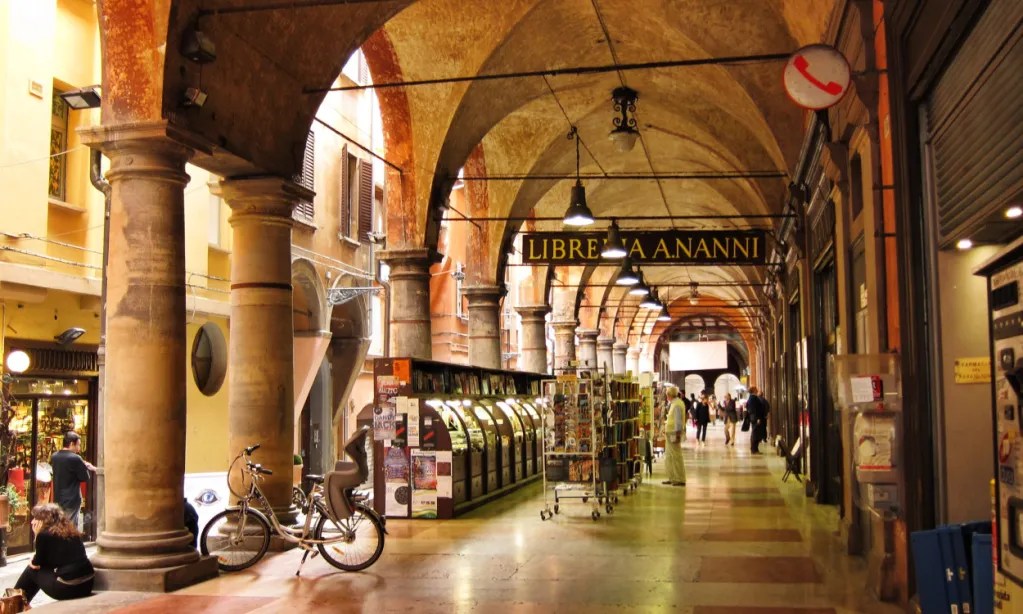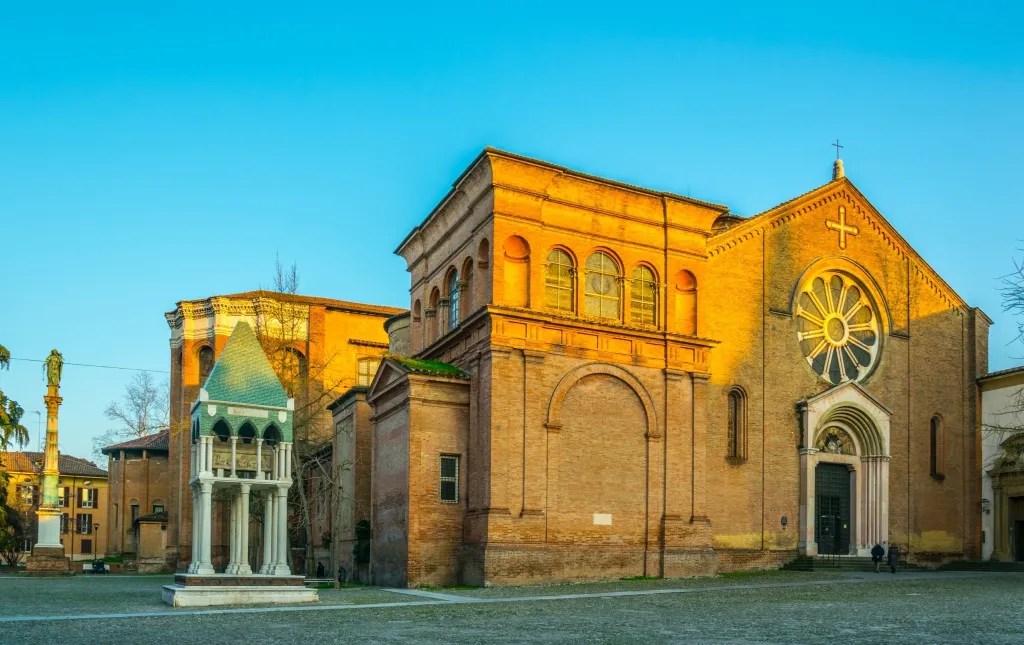The Porticoes of Bologna are a significant part of the city’s cultural and architectural heritage, symbolizing Bologna itself. No other city worldwide has as many porticoes as Bologna, which stretch over 38 kilometers just in the historic center. When including those beyond the medieval city walls, the total extends to 53 kilometers.
The proliferation of these arcades was influenced by the rising number of students and scholars in the city. The porticoes began to expand in 1288 when local authorities mandated that all new constructions include porticoes. Initially, these structures were made of wood throughout the Middle Ages. However, a decree on March 26, 1568, led to their reconstruction using bricks or stones. Nonetheless, some wooden porticoes remain intact today, notably in via Marsala and Corte Isolani.

The 20th century introduced concrete, which allowed for new building possibilities, replacing traditional vaulted arcades with fresh designs. This era gave rise to a new architectural style for the porticoes, particularly evident in the Barca district. The porticoes reflect various types, urban and social functions, and historical phases, categorized as privately owned spaces accessible to the public, and they’ve become a defining aspect of Bologna’s urban identity.
In 2021, Bologna’s porticoes were designated a UNESCO World Heritage Site.

What is a famous culinary specialty from Bologna?


The cuisine of the Emilia-Romagna region is celebrated as one of the finest in Italy, known for producing some of the country’s most iconic dishes. Bologna is particularly famous for its handmade egg pasta and stuffed pasta, especially tortellini, along with the renowned Ragu alla Bolognese, a richly flavored meat sauce that is slow-cooked to perfection.
Here are some reasons to include the Porticoes in your group tour:
- It serves as an excellent location for a day trip.
- It boasts a rich history and diverse culture.
- You can explore stunning churches such as the San Domenico Basilica, home to a statue by Michelangelo and a piano once played by Mozart during his studies in Italy.
- Climb the 498 steps of the 12th-century Asinelli Tower for breathtaking views of the city and its beautiful surroundings.
After your visit, you’ll have the unique distinction of saying you’ve experienced the world’s longest portico!



